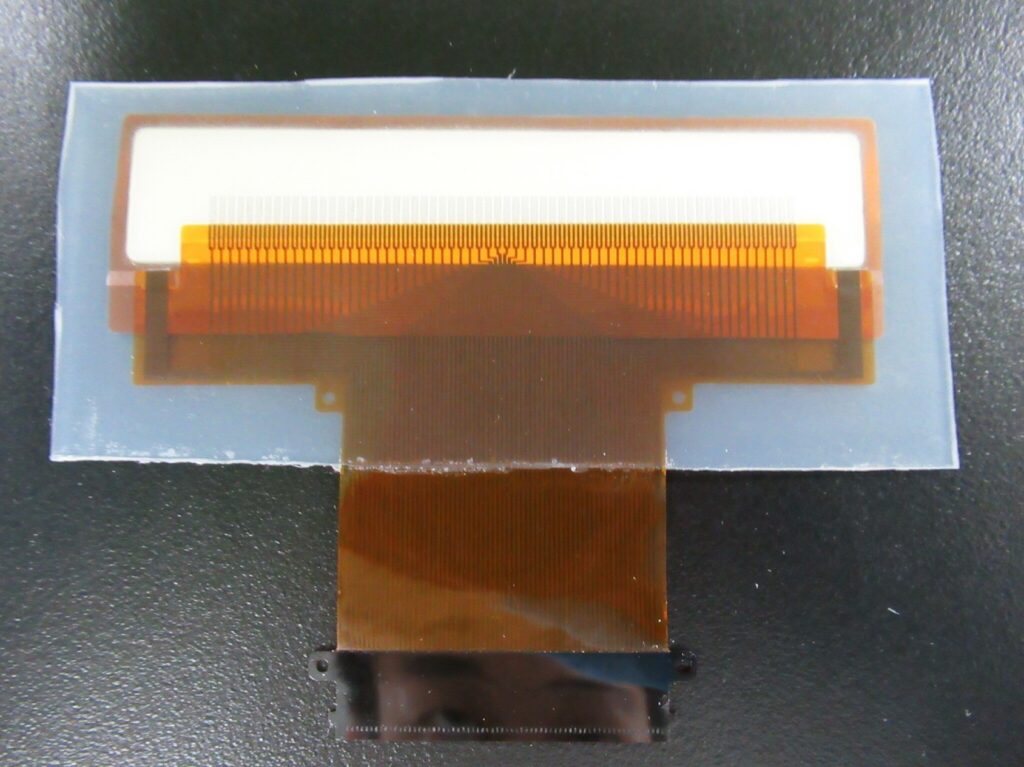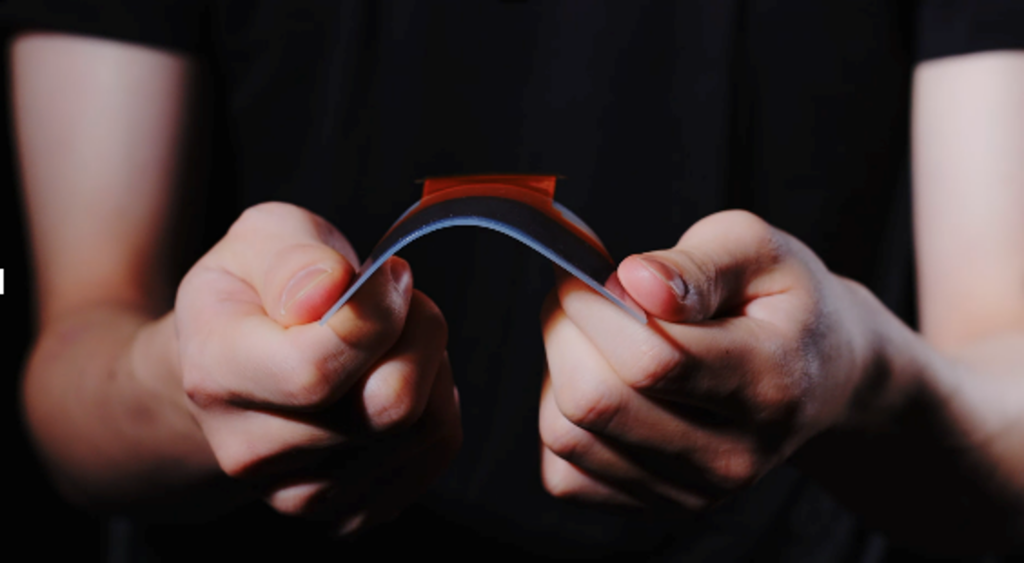Mr. Masayuki Tanabe, Representative Director of salmontech inc.
The mass production of low-cost ultrasound diagnostic equipment (echo equipment), which has been traditionally extremely expensive, is on the horizon. Salmontech inc. has successfully developed a thin and flexible probe that is used as a wearable echo device that is capable of long-time measurement. We spoke with Dr. Masayuki Tanabe, the Representative Director of salmontech inc., about the future of medical treatment and healthcare that will be possible by applying this technology.
―Could you tell us about salmontech inc.?

Representative Director of salmontech inc.
We are a startup that was born at Kumamoto University in 2022 that develops medical echo equipment and its peripherals and software.
I’ve been working on ultrasound technology all my life, including during my graduate studies. When I was in graduate school, I used ultrasound to make motors, made sensors that transmit and receive ultrasound, and studied signal processing and image processing to make images using the sensors. Even within the field of electricity, I have conducted research in three slightly different areas in parallel. When one didn’t go well, I worked on another. When that one didn’t work, I tackled the other. By working this way, I was able to achieve results in all three research areas. I was extremely lucky.
Even after I got my degree and moved to Kumamoto University as an assistant professor, I continued my study focusing on ultrasound.
―What kind of fields will you apply this technology to?
One of the topics we are currently working on is the nursing care of patients with defecation disorders.
As the population declines, the number of doctors, nurses, and other medical workers will decrease, but the number of elderly people will continue to increase. This is an issue our society must address.
So, we are working on defecation care technology to contribute by utilizing robots, AI, and ultrasonic sensing.
We are also developing ultrasonic sensors themselves.
Commercial probes are big, heavy, and hard. Doctors use a probe by pressing it against a patient’s stomach or chest, but it’s hard and doesn’t bend, so it’s used while the patient’s body gets squashed.
As a response, we developed a thin, light, flexible probe that can be made into a wearable device.
With a conventional echo probe, doctors apply gel, forcefully press the probe against the area that needs examination, and perform a one-time measurement for a short time. That’s all. On the other hand, our probe can be stuck on to a patient’s body for long-time monitoring.


―That’s amazing. What about cost and performance?
We can manufacture it inexpensively because it can be mass produced.
Commercial probes are difficult to mass produce because some of the processes require human hands for assembly, but with our method, we can mass produce 100,000 or even 1 million probes if we prepare a full assembly line.
In terms of performance, while its image quality is still a little rough, our probe can capture the structure of organs. It may still be difficult to use it for diagnosis but should be sufficient for measurement and observation.
We feel that there is a lot of demand for taking a broad look at the anatomical structures, so we are currently exploring applications with major companies.
―How do you plan to expand your business in the future?
Potential fields include breast cancer home screening, pelvic floor muscle training, inexpensive and replaceable ultrasound probes for developing countries, and metabolic checks.
Regarding pelvic floor muscle training, we are considering providing a solution to women’s urinary leakage.
Although the traditional methods of training involve stretch poles, such as in Pilates, the pelvic floor muscles themselves aren’t visualized. Therefore, we are trying to create a device to provide a service that addresses this issue.
Pilates instructors sometimes use ultrasonic echoes to check the movement of the pelvic floor muscles when receiving training for teaching qualifications. However, since existing ultrasonic echo devices are expensive and as a result aren’t affordable for the schools, they are not used for student lessons.
We are looking into if we could offer an easily affordable price.
Ultrasonic echo equipment basically needs to be approved as medical devices, but we don’t want to be limited to the medical equipment field. We also want to provide non-medical equipment services in the healthcare field. Since these fields are almost the same in engineering, we are taking various actions both to distribute our equipment through commercial medical channels and to have it be used for healthcare as non-medical equipment in areas like Pilates.
―What price do you think you can offer for your equipment for breast cancer home screening and pelvic floor muscle training?
We want to set the selling price of our non-medical equipment to tens of thousands of yen. More specifically, we are aiming to reduce end users’ initial cost to zero yen.
―If your low-price offering becomes possible, that would go a long way towards fulfilling your goal of “inexpensive and replaceable ultrasound probes for developing countries.”
That’s right. Part of our goal in developing an inexpensive ultrasonic echo device is based in our desire to roll it out overseas.
Medical ultrasound diagnostic equipment is still expensive, so developing countries cannot easily afford it.
JICA (Japan International Cooperation Agency) and other organizations have donated money, but the reality is that it’s also hard to take care of as far as maintenance.
When doctors are dispatched from Japan to inspect medical sites, it’s often reported that the probe is broken and had just been left in the corner of the room.
Ultrasonic echo equipment is made up of three main parts: an electronic substrate, a battery, and a probe. Of these, the electronic substrate and battery are commodities, and the only part that requires a special manufacturing process is the probe. This probe is delicate and fragile, and if it breaks, there’s nothing that can be done about it.
Since we have the technology to make this probe much cheaper, we are considering if we can get into the market.
―You mentioned metabolic checks. Could you give us some details?
There is a lot of interest in visceral fat, and a lot of TV commercials and magazines are advertising pharmaceutical products that claim to reduce it.
In general, when you want to check your visceral fat, you use a body composition monitor. Another method is to measure around your stomach with a measuring tape. You can also weigh yourself.
Those are the standard methods for the check-up, but the problem is that they alone have trouble capturing the exact value of your visceral fat. They are prone to error.
On the other hand, ultrasonic echoes enable you to see subcutaneous fat, the abdominal rectus muscle under it, and then the visceral fat under that. Although these are tomography images, visceral fat can be measured in an easy-to-understand way.
Research has shown that there are many people with “hidden obesity.”
At first glance, they are slim, and their BMI is normal. The body composition monitor shows a fairly decent value, but during a check-up with ultrasonic echoes, they strangely have a lot of visceral fat. There are surprisingly many people like that, 2 or 3 out of 100.
They’re people who have passed the conventional metabolic screening. Our technology can beyond the norm and find that they actually have a lot of visceral fat.
Ultrasonic echoes haven’t been used to measure visceral fat because they’re normally cumbersome to handle and tend be expensive, but if our technology is utilized, it could be a good candidate for proliferation.
With our affordable and flexible ultrasonic echo technology that combines cost effectiveness and usability, we want to support everyone’s health both medically and in healthcare.
| Company Name:salmontech inc. |
| Founded:March 2022 |
| Main Business:Developing medical ultrasound diagnostic equipment and its peripherals and software URL:https://www.salmontech.jp |
This article is part of a series of articles introducing venture companies working together as ICF members to resolve societal issues.





